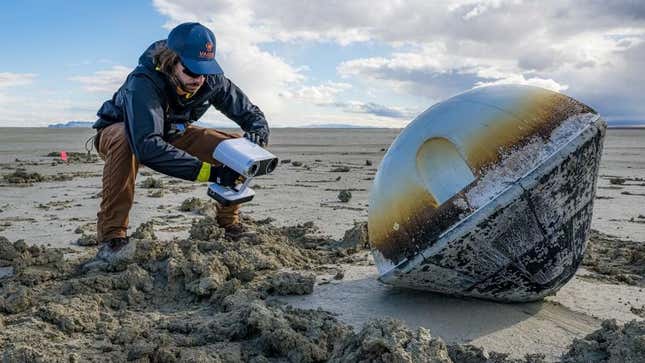California startup Varda Space released raw footage of its capsule reentering the atmosphere. This mission marked two significant achievements: bringing home the first batch of pharmaceutical crystals manufactured in orbit outside the International Space Station (ISS), and making Varda Space, with help from Rocket Labs, the first private company to land a capsule on U.S. soil.
The 27-minute long video was uploaded to the company’s Youtube page, revealing the full journey of the company’s W-1 spacecraft as it separated from Rocket Lab’s Photon satellite bus in orbit and then tumbling towards Earth with our planet and the Sun appearing in the frame with each dizzying spin.
Things really heat up about halfway through the video, with the capsule traveling through Earth’s atmosphere at hypersonic speeds greater than Mach 25 (30,000 kilometers per hour) before deploying its parachute to slow down its descent ahead of its touchdown on the surface.
Varda Space’s orbital factory landed at the Utah Test and Training Range on February 21 after having spent eight months in orbit. This marked the first time a private company landed a spacecraft on U.S. soil, but it was not easy to bring those space drugs home. The mission was originally supposed to return in September 2023 but was denied reentry to Earth by the Federal Aviation Administration (FAA).

Although Rocket Lab’s Photon spacecraft, which housed Varda’s capsule in orbit, was originally designed to operate for four months in space, it managed to provide power, communications, ground control, and attitude control to the orbital factory for double that time as the company worked to secure a license for its reentry.
The FAA finally granted Varda Space a reentry license in February, allowing the first in-orbit manufacturing experiment to return to Earth. While in space, Varda’s Winnebago-1 mission developed crystals of the drug ritonavir, which is used for the treatment of HIV, to test how it would crystalize in microgravity (and avoid gravity-induced defects). The mission marked the first time this type of drug was produced in orbit outside the ISS.
Now that the capsule is has reentered through Earth’s atmosphere, the crystals will be analyzed to see how they were affected by the microgravity environment. Protein crystals made in space form larger and more perfect crystals than those created on Earth, according to NASA.
For more spaceflight in your life, follow us on X (formerly Twitter) and bookmark Gizmodo’s dedicated Spaceflight page.

